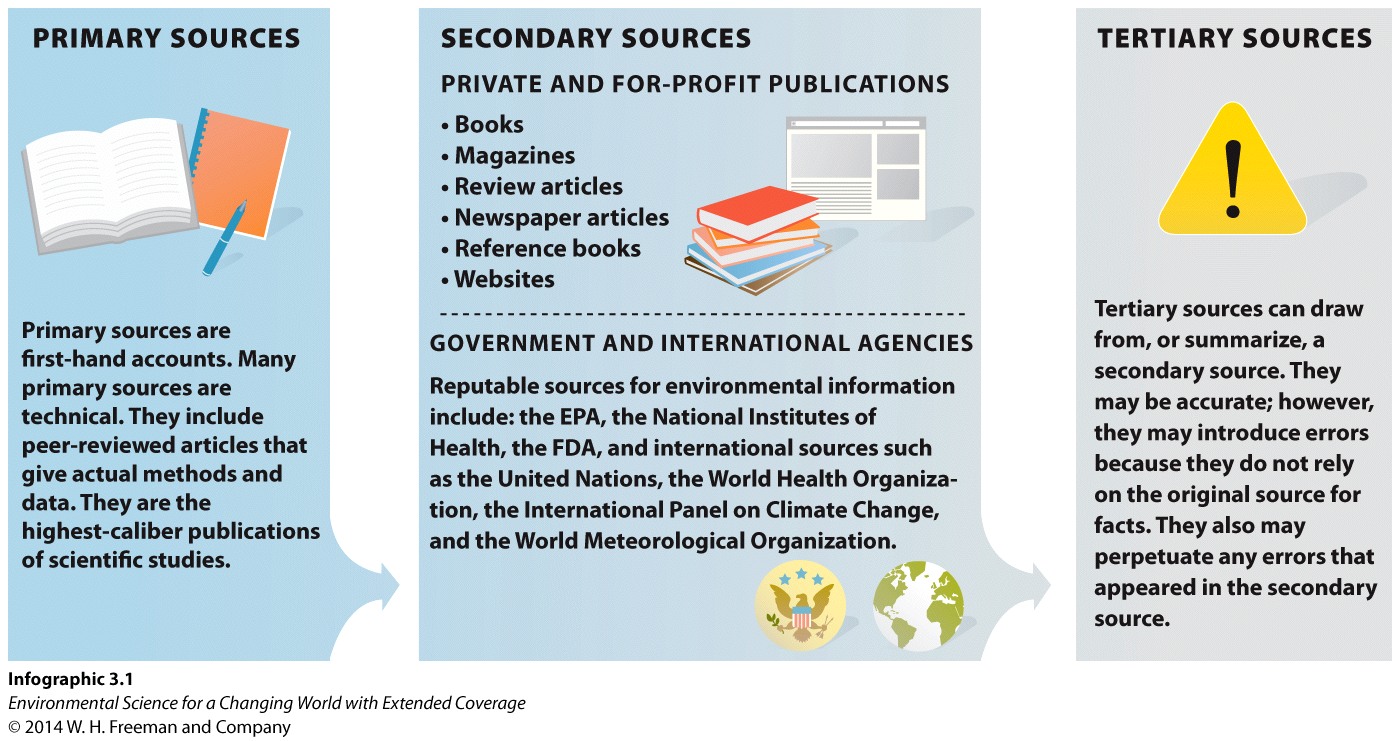
Chapter 3. Chapter 3: Information Literacy
What is information literacy...

Guiding Question 3.1
What is information literacy, and why is it important?
Why You Should Care
Any decision is made based on what we know right now, so our information and the sources for it are crucial to making good decisions. Looking back, there are numerous examples of bad decisions that were made with incomplete or faulty information: The safety of the pesticide DDT, canals on Mars, and studying skull shapes to estimate personality are just a few examples from science.
Today, we are overwhelmed with sources of information, and therefore, it is more important than ever to closely examine information sources. Knowing who is presenting the information and what value we place on that information is the key to information literacy. Not every source has the same weight and value.
Test Your Vocabulary
Choose the correct term for each of the following definitions:
| Term | Definition |
|---|---|
| A process where researchers submit a report of their work to outside experts who evaluate the study’s design and results to determine if it is of a high-enough quality to publish. | |
| The ability to find and evaluate the quality of information. | |
| Sources that present and interpret information from primary sources. Secondary sources include newspapers, magazines, books, and most information from the Internet. | |
| Sources that present and interpret information from secondary sources. | |
| Sources that present new and original data or information, including novel scientific experiments or observations and first-hand accounts of any given event. |

Question Sequence
1.
Climate change (also called global warming) is a very popular and controversial topic in environmental science right now. With the rise of the Internet, you can find thousands of different viewpoints on climate change. Let’s say you find a blog post titled “Global Warming A Scam!” that details prehistoric global temperatures and atmospheric carbon dioxide levels. The main conclusion of the post is that there is not a strong relationship between carbon dioxide levels and temperature. The author lists these data in a graph that is easy to understand and also lists the sources for the data.
A) Which of the three kinds of information sources does this page represent?
| A. |
| B. |
| C. |
B) How would you go about determining how valid the post’s conclusions about carbon dioxide and temperature are?
B) The author’s position is based on the data and studies he assembled in the graph. To assess how valid his view of the data is, you could find the sources he cited for the graph’s data and do two things:
1) Review the original author(s)’ conclusion about the data.
2) Find other authors who cite the same studies and compare their conclusions.
Since there are many web-based secondary sources reporting on science, chances are good that there is some commentary on major studies out there on the Internet.
B) The author’s position is based on the data and studies he assembled in the graph. To assess how valid his view of the data is, you could find the sources he cited for the graph’s data and do two things:
1) Review the original author(s)’ conclusion about the data.
2) Find other authors who cite the same studies and compare their conclusions.
Since there are many web-based secondary sources reporting on science, chances are good that there is some commentary on major studies out there on the Internet.
2.
In following up on this blog post, you find an article on a news channel’s website that summarizes a recent study that found rising carbon dioxide levels after the last Ice Age that preceded a rapid rise in temperature around 11,000 years ago. The article links to an original paper that was published in a famous scientific journal.
A) Which of the three kinds of information sources does the news channel article represent?
| A. |
| B. |
| C. |
B) Which of the three kinds of information sources does the journal paper represent?
| A. |
| B. |
| C. |
C) The scientific journal only publishes papers that are peer-reviewed. Which of the three kinds of information sources does the journal paper represent?
D) Why does it increase the value of the paper?
C) Peer review is a safeguard to make sure that other scientists interpret the studies’ conclusion in the same way. It ensures that the scientific method is being used in the same way and that data are interpreted in the same way by every scientist.
D) Peer review increases the value of a paper because it demonstrates that this is a widely agreed-upon conclusion given the available data. Without peer review, it is more likely that conclusions could be published that were incorrectly interpreting data or using incorrect procedures for setting up the experiment.
C) Peer review is a safeguard to make sure that other scientists interpret the studies’ conclusion in the same way. It ensures that the scientific method is being used in the same way and that data are interpreted in the same way by every scientist.
D) Peer review increases the value of a paper because it demonstrates that this is a widely agreed-upon conclusion given the available data. Without peer review, it is more likely that conclusions could be published that were incorrectly interpreting data or using incorrect procedures for setting up the experiment.
Activity results are being submitted...